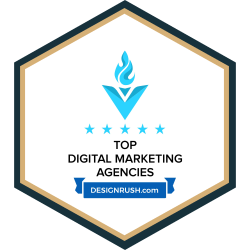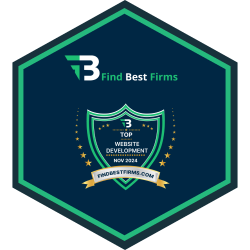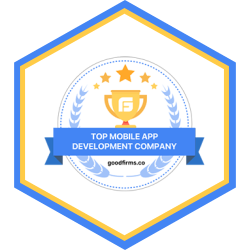In the realm of software development methodologies, two prominent approaches often vie for attention: Agile and Waterfall. Each methodology presents its own set of advantages and challenges, making the choice between them a critical decision for any project. In this blog post, we will delve into the nuances of Agile and Waterfall methodologies, explore their characteristics, and provide guidance on selecting the most suitable approach for your project.
Understanding Software Development Methodologies
Software development methodologies serve as the backbone of the entire software development process, providing structure, guidelines, and best practices to ensure successful project outcomes. They play a crucial role in organizing, planning, and executing various tasks involved in bringing a software product from concept to deployment. Let’s delve deeper into the significance and nuances of two of the most widely recognized methodologies: Agile and Waterfall.
Agile Development Methodology
Agile methodology is a flexible, iterative approach that emphasizes collaboration, adaptability, and customer feedback. Unlike the traditional Waterfall model, Agile breaks down the development process into smaller increments known as sprints. This iterative approach allows for continuous improvement and the ability to adapt to changing requirements throughout the project lifecycle.
History of Agile:
The 1990s marked a transformation in software development practices, leading to the emergence of Agile methodology and its roots. Frustrated with the limitations of traditional methods, a group of software developers, including Kent Beck, Ward Cunningham, and Martin Fowler, began experimenting with lightweight, iterative approaches to software development. This led to the formulation of the Agile Manifesto in 2001, which outlined the core values and principles of Agile development.
Manifesto for Agile Software Development:
The Agile Manifesto emphasizes four key values:
- Individuals and interactions over processes and tools
- Working software over comprehensive documentation
- Customer collaboration over contract negotiation
- Responding to change over following a plan
These values prioritize flexibility, customer satisfaction, and collaboration, laying the foundation for Agile methodologies.

What is Agile Project Management?
Agile project management is an iterative and customer-centric approach to managing projects that prioritizes flexibility, collaboration, and adaptability. It stems from the Agile Manifesto, which emphasizes individuals and interactions, working software, customer collaboration, and responding to change over following a plan.
In Agile project management, traditional project management practices are adapted to suit the dynamic and iterative nature of Agile development methodologies, such as Scrum, Kanban, and Extreme Programming (XP). Unlike traditional project management approaches, which often rely on extensive upfront planning and documentation, Agile project management focuses on delivering value to customers early and continuously adapting to changing requirements.
Key principles of Agile project management include:
- Iterative Development: Projects are divided into short iterations or sprints, typically lasting two to four weeks. Each iteration results in a potentially shippable product increment, allowing for continuous feedback and adaptation.
- Customer Collaboration: Active involvement of customers and stakeholders throughout the development process is essential. Regular feedback sessions, demos, and reviews ensure that the product meets their evolving needs and expectations.
- Adaptive Planning: Agile projects embrace change and adjust plans and priorities based on feedback and emerging requirements. Rather than adhering to a rigid plan, Agile teams prioritize delivering high-value features early and continuously seek opportunities for improvement.
- Cross-Functional Teams: Agile project teams are self-organizing and cross-functional, with all the skills necessary to deliver working software. By breaking down silos and fostering collaboration, Agile teams achieve greater efficiency and innovation.
Agile project management frameworks, such as Scrum, provide structure and guidance for implementing Agile practices. In Scrum, for example, projects are managed through a series of fixed-length iterations called sprints, with dedicated roles such as Product Owner, Scrum Master, and Development Team. Daily stand-up meetings, sprint planning sessions, and sprint reviews are used to facilitate communication, collaboration, and transparency within the team.
Agile Methodology Advantage and Disadvantage:
Advantages:
- Flexibility: Agile allows for changes to be incorporated throughout the development process, enhancing adaptability to evolving requirements.
- Customer Satisfaction: By involving customers in the development process and delivering working software incrementally, Agile ensures that the final product meets their needs and expectations.
- Improved Quality: Continuous testing and feedback loops in Agile result in higher-quality software with fewer defects.
- Faster Time to Market: Agile’s iterative approach enables quicker delivery of valuable features, reducing time to market and increasing competitiveness.
Disadvantages:
- Lack of Predictability: Agile projects can be unpredictable due to changing requirements and priorities, making it challenging to estimate timelines and budgets accurately.
- Dependency on Team Collaboration: Agile success relies heavily on effective collaboration among team members and stakeholders. Poor communication or team dynamics can hinder project progress.
- Resource Intensive: Agile requires dedicated involvement from all stakeholders throughout the project, which may strain resources and time.
- Not Suitable for All Projects: Agile may not be suitable for projects with fixed requirements or strict regulatory constraints, where a more structured approach like Waterfall is preferred.
Life Cycle of Agile Methodology:
The Agile life cycle typically consists of the following phases:
- Planning: Define project scope, goals, and priorities.
- Iteration/Execution: Develop, test, and deliver increments of working software.
- Review: Gather feedback from stakeholders and assess progress.
- Reflection: Reflect on lessons learned and identify areas for improvement.
- Adaptation: Adjust plans and priorities based on feedback and changing requirements.
Applications of Agile Methodology:
Agile methodology is widely used in various industries and domains, including software development, project management, marketing, and product development. It is particularly well-suited for:
- Complex projects with evolving or uncertain requirements
- Startups and small teams seeking rapid innovation and market validation
- Cross-functional teams collaborating on multidisciplinary projects
- Projects requiring frequent delivery of working software or products
Benefits of Agile Methodology:
- Adaptability: Agile allows teams to respond quickly to changes in requirements, technology, or market conditions.
- Customer Satisfaction: Continuous feedback and collaboration ensure that the final product meets customer needs and expectations.
- Efficiency: Iterative development and self-organizing teams promote productivity and innovation.
- Risk Mitigation: Incremental delivery and frequent testing reduce project risks and increase predictability.
Limitations of Agile Methodology:
- Complexity: Agile can be challenging to implement in large, complex projects or organizations with established processes.
- Dependency on Team Collaboration: Success in Agile requires strong collaboration among team members and stakeholders, which may not always be feasible.
- Resource Intensive: Agile projects require dedicated involvement from all stakeholders, which can strain resources and time.
- Not Suitable for All Projects: Agile may not be suitable for projects with fixed requirements or strict regulatory constraints, where a more structured approach like Waterfall is preferred.
Example of Agile Methodology:
XYZ Company, a leading provider of digital solutions, recently embarked on a marketing campaign to launch a new product. To ensure the success of the campaign, XYZ chose to implement Agile methodology, leveraging its principles to adapt to changing market dynamics and deliver value incrementally. Let’s explore how XYZ Company applied Agile methodology in their marketing campaign.
- Sprint Planning: At the outset of the campaign, XYZ’s marketing team conducted a sprint planning session to outline the campaign objectives, identify target audience segments, and prioritize marketing tactics. Using Agile principles, they broke down the campaign into manageable tasks and defined sprint goals for each iteration.
- Daily Stand-ups: Throughout the campaign, the marketing team held daily stand-up meetings to review progress, discuss challenges, and align on priorities. These brief, focused meetings kept everyone on the same page, enabling quick decision-making and fostering collaboration among team members.
- Iterative Execution: Using Agile methodology, XYZ’s marketing team executed the campaign in iterative cycles, releasing small, targeted marketing initiatives at the end of each sprint. This approach allowed them to gather real-time feedback from customers and adjust their strategies accordingly, ensuring maximum impact and engagement.
- Continuous Improvement: At the conclusion of each sprint, XYZ’s marketing team conducted a retrospective to reflect on their performance, identify areas for improvement, and plan for the next iteration. By embracing a culture of continuous improvement, they were able to fine-tune their strategies and optimize their campaign for success.
Through the application of Agile methodology, XYZ Company successfully executed their marketing campaign with agility, adaptability, and customer-centricity. By embracing Agile principles such as iterative development, continuous feedback, and collaboration, they were able to navigate uncertainty, respond to market changes, and achieve their marketing objectives effectively.
Agile Methodologies vs Traditional Approaches
Agile methodologies differ from traditional approaches, such as Waterfall, in the following ways:
- Flexibility: Agile embraces change and allows for iterative development, while traditional approaches follow a rigid, sequential process.
- Customer Involvement: Agile prioritizes customer collaboration and feedback throughout the development process, whereas traditional approaches involve customers primarily at the beginning and end of the project.
- Documentation: Agile focuses on delivering working software over comprehensive documentation, whereas traditional approaches require extensive documentation upfront.
- Risk Management: Agile mitigates risks through incremental delivery and continuous feedback, while traditional approaches rely on upfront planning to manage risks.
Waterfall Development Methodology
Waterfall methodology is a structured, sequential approach to software development, where each phase must be completed before progressing to the next. It follows a predefined set of stages, typically including requirements gathering, design, implementation, testing, deployment, and maintenance. Unlike Agile, which emphasizes flexibility and adaptability, Waterfall requires comprehensive planning and documentation upfront.
Features of Waterfall Methodology:
- Sequential Phases: Waterfall projects progress through distinct phases, with each phase building upon the results of the previous one in a linear fashion.
- Comprehensive Documentation: Waterfall places a strong emphasis on upfront planning and documentation, with detailed requirements specifications, design documents, and test plans created before development begins.
- Predictable Timelines: Waterfall projects typically adhere to fixed timelines and budgets, as the entire scope is planned and defined upfront.
- Minimal Customer Involvement: Unlike Agile, which encourages active customer collaboration throughout the development process, Waterfall involves customers primarily at the beginning and end of the project, with limited opportunities for iteration.
Importance of Waterfall Methodology:
Waterfall methodology is valuable in scenarios where:
- The project requirements are well-understood and unlikely to change significantly.
- There is a need for strict adherence to timelines and budgets.
- Comprehensive documentation is essential for regulatory compliance or future maintenance.
Phases of Waterfall Model – Design:
In the Waterfall model, the Design phase follows the Requirements phase and precedes Implementation. During this phase:
- Detailed system design is created based on the requirements specified in the previous phase.
- The design may include architectural diagrams, data models, interface designs, and system flowcharts.
- Design documents are reviewed and approved before proceeding to the next phase.
Advantages and disadvantages of Waterfall Methodology
Advantages
- Clear Structure: Waterfall provides a clear and structured roadmap for project execution, making it easier to plan and manage.
- Comprehensive Documentation: Detailed documentation helps mitigate risks and ensures clarity throughout the development process.
- Predictability: Waterfall projects are predictable in terms of timelines, budgets, and deliverables, making it easier to estimate and manage.
Disadvantages:
- Limited Flexibility: Once the project scope and requirements are defined, changes are difficult and costly to implement in the Waterfall model.
- Late Feedback: Customer feedback is typically gathered at the end of the project, leading to the potential for misunderstandings or dissatisfaction.
- Risk of Incomplete Requirements: Since all requirements are defined upfront, there is a risk of overlooking important details or changes in stakeholder needs.
Applications of Waterfall Methodology:
Waterfall methodology is commonly used in industries and domains such as:
- Aerospace and defense, where regulatory compliance and documentation are critical.
- Large-scale infrastructure projects, where detailed planning and predictability are essential.
- Projects with stable and well-defined requirements, where iterative development is not feasible or necessary.
Example of Waterfall Methodology:
XYZ Construction Company plans to develop a custom project management software to streamline their project tracking and resource allocation processes. They engage a software development firm and provide detailed requirements upfront, including features, user roles, and reporting capabilities.
The software development team follows the Waterfall methodology:
- Requirements Phase: They gather and document all requirements from XYZ Construction Company, including user stories, use cases, and acceptance criteria.
- Design Phase: Based on the requirements, the team creates a comprehensive system design, including database schemas, wireframes, and interface designs.
- Implementation Phase: Developers use the approved design documents to build the software according to the specifications.
- Testing Phase: The completed software undergoes rigorous testing to ensure it meets the defined requirements and functions correctly.
- Deployment Phase: Once testing is complete and the software is deemed ready for production, it is deployed to XYZ Construction Company’s servers.
- Maintenance Phase: Post-deployment, the software requires ongoing maintenance and support to address any issues or updates.
Despite its limitations, Waterfall methodology enables XYZ Construction Company to successfully develop and deploy the project management software within the expected timeframe and budget, meeting their business objectives.
Agile Methodology vs. Waterfall Methodology
When it comes to software development, two prominent methodologies emerge: Agile and Waterfall. Each methodology offers distinct approaches to project management, with its own set of advantages and challenges. Let’s explore the differences between Agile and Waterfall methodologies:
Agile Methodology:
- Iterative and Incremental: Agile emphasizes iterative development, where projects are divided into small increments or sprints. Each sprint delivers a potentially shippable product increment.
- Flexibility and Adaptability: Agile embraces change and welcomes feedback from stakeholders throughout the development process. Requirements are continuously refined and adjusted based on customer needs and market dynamics.
- Customer Collaboration: Active involvement of customers and stakeholders is essential in Agile. Regular feedback sessions and demos ensure that the product meets customer expectations.
- Cross-Functional Teams: Agile promotes self-organizing, cross-functional teams that possess all the skills necessary to deliver working software. Collaboration and communication are prioritized.
Waterfall Methodology:
- Sequential and Linear: Waterfall follows a sequential, phased approach to software development, where each phase must be completed before proceeding to the next. There is minimal overlap or iteration between stages.
- Comprehensive Planning: Waterfall requires extensive upfront planning and documentation before development begins. Detailed requirements specifications, design documents, and test plans are created in advance.
- Predictability: Waterfall projects adhere to fixed timelines and budgets, with a clear and structured roadmap. This predictability makes it easier to estimate and manage projects.
- Limited Customer Involvement: Unlike Agile, which encourages active customer collaboration throughout the development process, Waterfall involves customers primarily at the beginning and end of the project, with limited opportunities for iteration.
Choosing the Right Methodology
Selecting the appropriate methodology for your project depends on various factors, including project scope, complexity, timeline, and stakeholder requirements. Here are some considerations to help you make an informed decision:
1. Approach:
- Agile: Iterative and adaptive approach that welcomes change and emphasizes customer collaboration.
- Waterfall: Sequential and structured approach with minimal flexibility and limited customer involvement.
2. Planning and Documentation:
- Agile: Minimal upfront planning and documentation, with a focus on delivering working software early and continuously refining requirements.
- Waterfall: Extensive upfront planning and documentation, with detailed requirements and design specifications created before development begins.
3. Customer Involvement:
- Agile: Active involvement of customers and stakeholders throughout the development process, with regular feedback sessions and demos.
- Waterfall: Limited customer involvement, with feedback gathered primarily at the beginning and end of the project.
4. Flexibility and Adaptability:
- Agile: Embraces change and welcomes feedback, allowing for continuous refinement and adaptation of requirements.
- Waterfall: Minimal flexibility once the project scope and requirements are defined, making it challenging to accommodate changes.
Conclusion
In conclusion, the decision between Agile and Waterfall methodologies is pivotal in determining the success of a software development project. Agile offers flexibility, adaptability, and customer-centricity, making it suitable for projects with evolving requirements and dynamic environments. On the other hand, Waterfall provides structure, predictability, and comprehensive planning, ideal for projects with well-defined requirements and stable environments. Organizations should carefully assess project scope, complexity, and stakeholder needs to choose the most appropriate methodology. Ultimately, the right methodology aligns with the project’s goals and constraints, maximizing efficiency and ensuring successful outcomes. By leveraging the strengths of Agile or Waterfall methodologies, businesses can streamline their development processes, accelerate product delivery, and drive innovation in today’s competitive landscape.






